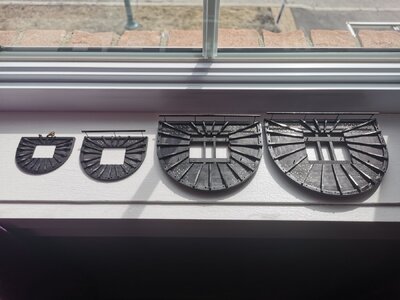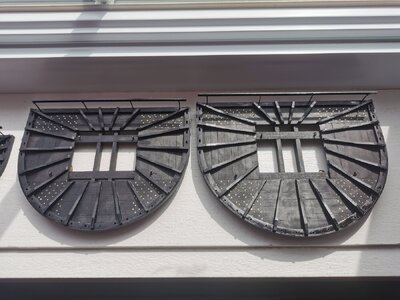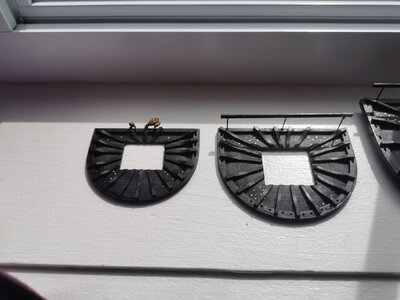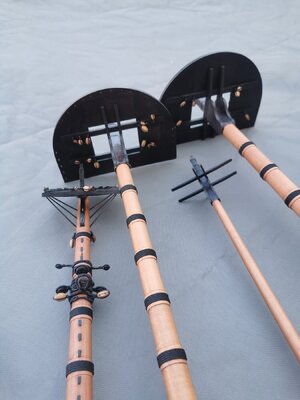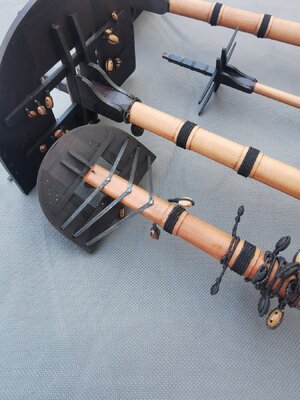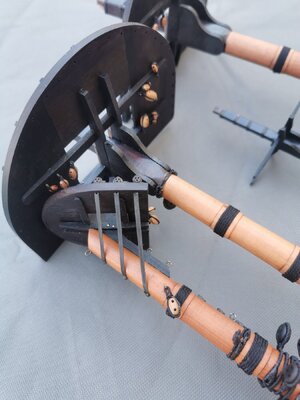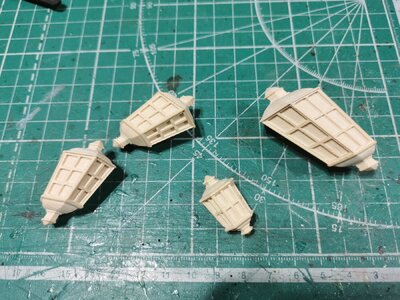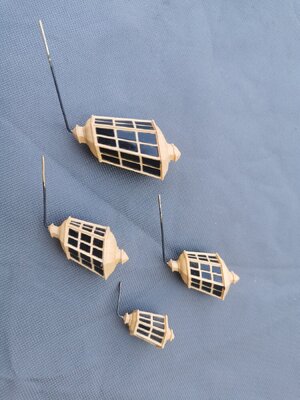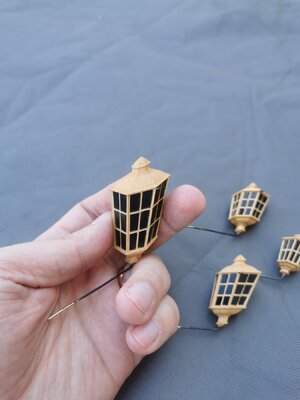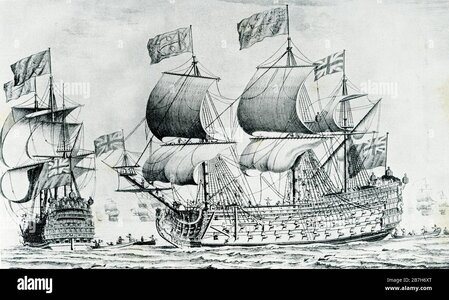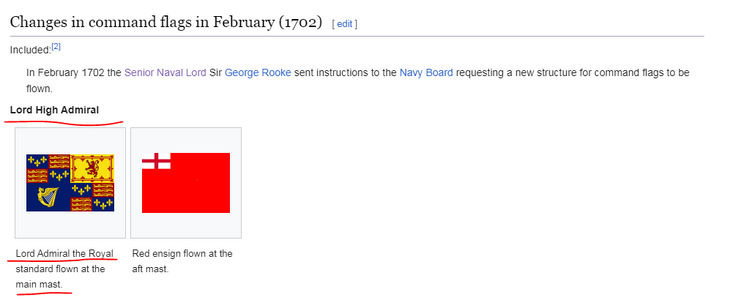That is the one I referred to. Very impressive. You would have to scale it down a bit to pass through your doorway.
-

Win a Free Custom Engraved Brass Coin!!!
As a way to introduce our brass coins to the community, we will raffle off a free coin during the month of August. Follow link ABOVE for instructions for entering.
-

PRE-ORDER SHIPS IN SCALE TODAY!
The beloved Ships in Scale Magazine is back and charting a new course for 2026!
Discover new skills, new techniques, and new inspirations in every issue.
NOTE THAT OUR FIRST ISSUE WILL BE JAN/FEB 2026
You are using an out of date browser. It may not display this or other websites correctly.
You should upgrade or use an alternative browser.
You should upgrade or use an alternative browser.
The Valmy model would be great - so we have to talk with Didier Berti....... and with Gerard for the monographThis one?
The Valmy model you showed has the dimensions:
H. 208 cm, l. 98 cm, L. 281 cm, échelle 1/40
Just for your planning of the doors......
Oeuvre : Précisions - Maquette de bateau, Valmy, vaisseau de 1er rang, 1847 | Les collections du musée | Musée national de la Marine
Notice d'oeuvre ''Maquette de bateau, Valmy, vaisseau de 1er rang, 1847'' du musée ''Les collections du musée | Musée national de la Marine''
this amazing model is also shown over several pages in
MODELES HISTORIQUES au musée de la marine - Volume 2
by Jean Boudriot
Book review - Book Review: "MODELES HISTORIQUES au musée de la marine - Volume 2"
Book Review: MODELES HISTORIQUES au musée de la marine - Volume 2 by Jean Boudriot The book has 288 pages on the collections of the Museum of the Navy. 359 color photographs. Format 24 * 31 cm Only available in French language – price actual via ancre 95 Euro...
shipsofscale.com
This build is so magnificent in every way. As I often like to say of builds of this quality: just go and try to do it better! I love your progress and am, naturally, excited to hear that you have the SP on your horizon. Man, will you do that ship justice!
The work on the mast tops is amazing - looking very good my friend -> a big BRAVO !!!!
How did you made the "glas" on your lanterns? is it a black folio? the laterns by themself are cnc-milled, or?
Very good work
How did you made the "glas" on your lanterns? is it a black folio? the laterns by themself are cnc-milled, or?
Very good work
The work on the mast tops is amazing - looking very good my friend -> a big BRAVO !!!!
How did you made the "glas" on your lanterns? is it a black folio? the laterns by themself are cnc-milled, or?
Very good work
Thank you Uwe! The black glass is the same as all other windows on the ship - I take transparent acrylic sheet, paint it matt black one side, then cut on my CNC. I hoped to cut it with my diode laser (as it was done in my Bonhomme Richard kit - this is where I took the whole idea), but it didn't work for some reason, maybe because my laser is too shitty. Cut it on CNC is very incovenient - I have to use a small bitt (1mm dia straight flat end) and still after 4 years of work I cannot get the proper milling parameters so that not to melt the acrylic and not to wind it onto the bitt and not break the bitt after all. Usually for acrylic you should use something like 4-6mm 1-flute bitt that you can rotate slowly and still displace very fast, but I'm limited to 1mm dia. There is a guy here on the forum that was able to do a clean work with 0.5mm acrylic and tapered bitt. Tapered bitt, even if it has 0.5mm dia nose can be displaced much faster than a 1mm dia straight bitt, so should generate less heat, but you need a 0.5mm acrylic. This is what I want to try next time. Or buy a better laser...
As to the lanterns - this was a CNC mill from 4 sides
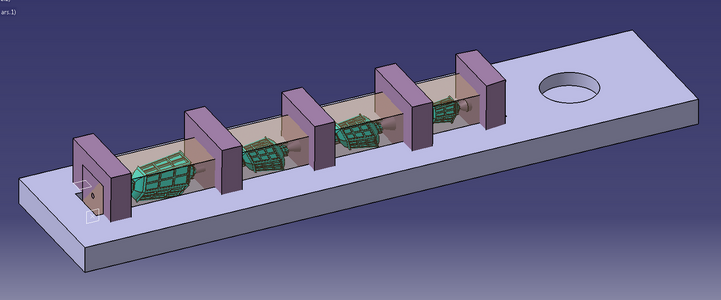
Look for special cutters for acrylic. There are different cutting angles and other tricks that do not allow plastic to melt
do you have a link for an example? aliexpress maybe?
Ok guys.... do we have flag specialists here?... recent days I was trying to dive in the deep and understand which flags need to be flown on my ship. Without big success.
Let's go one by one.
The aft standard. This one I think is the easiest - we need a red ensign of shape used 1707-1750. This one:
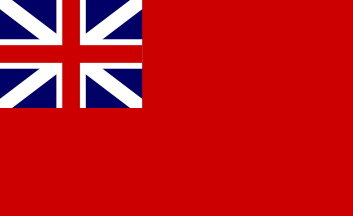
However even here might be tricky, as there were three squadrons - red, blue and white, each having their own ensign - red, blue and white... But let's stick to the red one. Just to have at least something definite... Correct me if I'm wrong.
Now.. here is the royal standard of king George I (1714-1727):
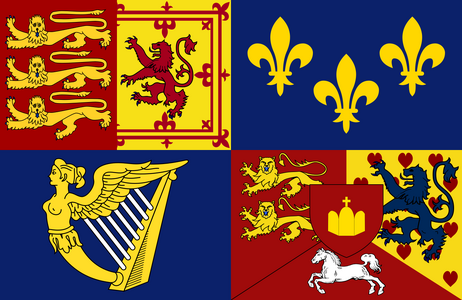
This one... well... did kings used to be present on a navy ship, even a flagship? Honestly I don't know. In case the king is onboard the ship, we need to put this flag on the mainmast.
Next - admiral of the fleet (this is a flagship right?). I'm a little bit confused between terms Admiral of the fleet and Lord High Admiral, especially that each of this terms involves its own flags. But I found, that admiral of the fleet from 1702-1864 would have the folowing flag on the mainmast:
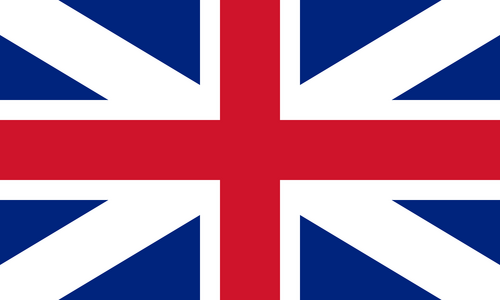
Now, if we have both the king and admiral of the fleet on the ship, which flag is on the mainmast and where will go another flag? Or it's better not to put the king on the ship?...
However, the picture becomes looking something like this:
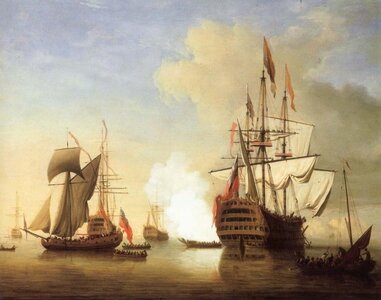
Although it's hard to say if the mainmast here has a king standard, or a standard of a lord high admiral as below:

This picture also includes a flag with an anchor at the foremast (well, most probably), which I cannot understand the meaning.
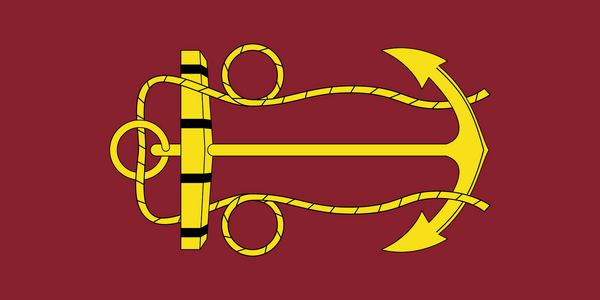
I've read that this is an Admiralty flag and it signifies the Admiralty and Marine Affairs Office, so it doesn't seem having to be present on a ship. However a painting is showing it.
The other painting that I have seems to represent just an Admiral of the fleet on the ship and without a king:
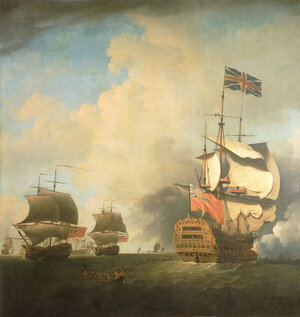
I also still didn't find rules about having the Union Jack on the sprit topmast. Should it be there or not?
So if somebody is able to help and guide me... would be very grateful...
Let's go one by one.
The aft standard. This one I think is the easiest - we need a red ensign of shape used 1707-1750. This one:

However even here might be tricky, as there were three squadrons - red, blue and white, each having their own ensign - red, blue and white... But let's stick to the red one. Just to have at least something definite... Correct me if I'm wrong.
Now.. here is the royal standard of king George I (1714-1727):

This one... well... did kings used to be present on a navy ship, even a flagship? Honestly I don't know. In case the king is onboard the ship, we need to put this flag on the mainmast.
Next - admiral of the fleet (this is a flagship right?). I'm a little bit confused between terms Admiral of the fleet and Lord High Admiral, especially that each of this terms involves its own flags. But I found, that admiral of the fleet from 1702-1864 would have the folowing flag on the mainmast:

Now, if we have both the king and admiral of the fleet on the ship, which flag is on the mainmast and where will go another flag? Or it's better not to put the king on the ship?...
However, the picture becomes looking something like this:

Although it's hard to say if the mainmast here has a king standard, or a standard of a lord high admiral as below:

This picture also includes a flag with an anchor at the foremast (well, most probably), which I cannot understand the meaning.

I've read that this is an Admiralty flag and it signifies the Admiralty and Marine Affairs Office, so it doesn't seem having to be present on a ship. However a painting is showing it.
The other painting that I have seems to represent just an Admiral of the fleet on the ship and without a king:

I also still didn't find rules about having the Union Jack on the sprit topmast. Should it be there or not?
So if somebody is able to help and guide me... would be very grateful...
This is my ship as Prince, 1670, before it was rebuilt into Royal William in 1719. I see a flag of Lord High Admiral on mainmast, flag of Admiral of the fleet on the mizzen and Admiralty flag on the foremast. I could stick to this picture but since it is related to the ship before 1719, I'm not sure if it's relevant to my time
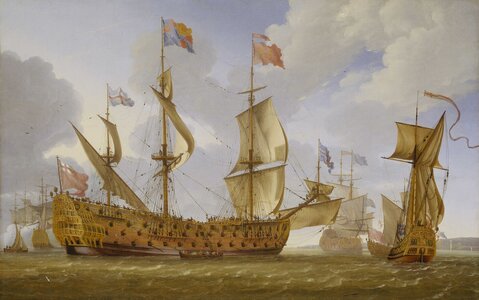

- Joined
- Dec 19, 2022
- Messages
- 72
- Points
- 113

Huys - since 1700, it has been raised only on the raid - the flag of the country to which the ship belongsJust realized that what is called a flag of the Lord High Admiral is at the same time the royal standard of Stuarts:
View attachment 443022
View attachment 443023
foremast - the flag of the country in the territorial waters is currently
the mainmast - the flag of the country belonging to the ship or the royal standard
mizzen mast - the pennant of the senior officer on the ship
aft flagpole on the raid or tile on the move - the flag of the British Navy
Гюйс - с 1700г поднимается только на рейде - флаг страны которой принадлежит корабль
фок-мачта - флаг страны в территориальных водах находится в данный момент
грот-мачта - флаг страны принадлежности корабля либо королевский штандарт
бизань-мачта - вымпел старшего офицера на корабле
кормовой флагшток на рейде либо гафель на ходу - флаг ВМФ британии
королевский штандарт поднимается только если король на борту, у каждого члена королевской семьи свой штандарт
Last edited:
... звучит не совсем прилично кода переводишь на Русский язык.Huys



 Может вместо 'H' должна быть 'G'?
Может вместо 'H' должна быть 'G'?I think it is a direct translation, and oftentimes doesn't translate the meaning of the word. While Гюйс is the Ruusian word, it is derived from geus (от нидерл) гёз.View attachment 443086
все верно )))
A jack is the English definition of the same type of flag.




